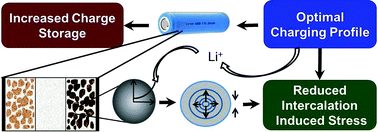Optimal charging profiles for mechanically constrained lithium-ion batteries
Abstract
The cost and safety related issues of lithium-ion batteries require intelligent charging profiles that can efficiently utilize the battery. This paper illustrates the application of dynamic optimization in obtaining the optimal current profile for charging a lithium-ion battery using a single-particle model while incorporating intercalation-induced stress generation. In this paper, we focus on the problem of maximizing the charge stored in a given time while restricting the development of stresses inside the particle. Conventional charging profiles for lithium-ion batteries (e.g., constant current followed by constant voltage) were not derived by considering capacity fade mechanisms. These charging profiles are not only inefficient in terms of lifetime usage of the batteries but are also slower since they do not exploit the changing dynamics of the system. Dynamic optimization based approaches have been used to derive optimal charging and discharging profiles with different objective functions. The progress made in understanding the capacity fade mechanisms has paved the way for inclusion of that knowledge in deriving optimal controls. While past efforts included thermal constraints, this paper for the first time presents strategies for optimally charging batteries by guaranteeing minimal mechanical damage to the electrode particles during intercalation. In addition, an executable form of the code has been developed and provided. This code can be used to identify optimal charging profiles for any material and design parameters.


 Please wait while we load your content...
Please wait while we load your content...